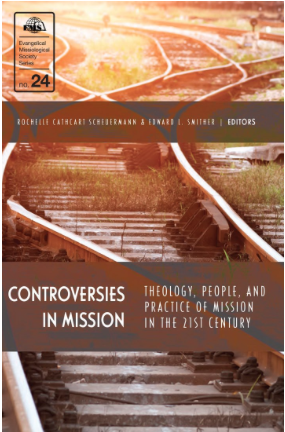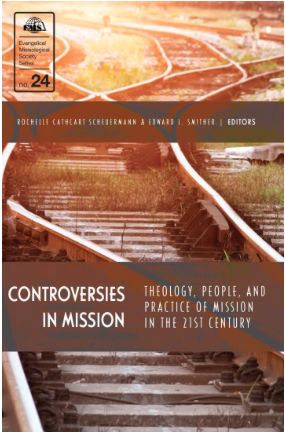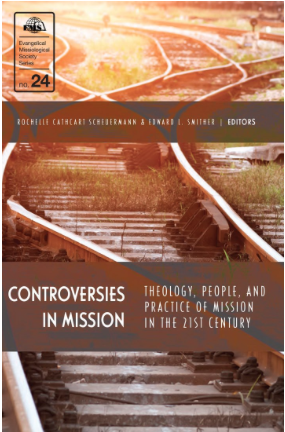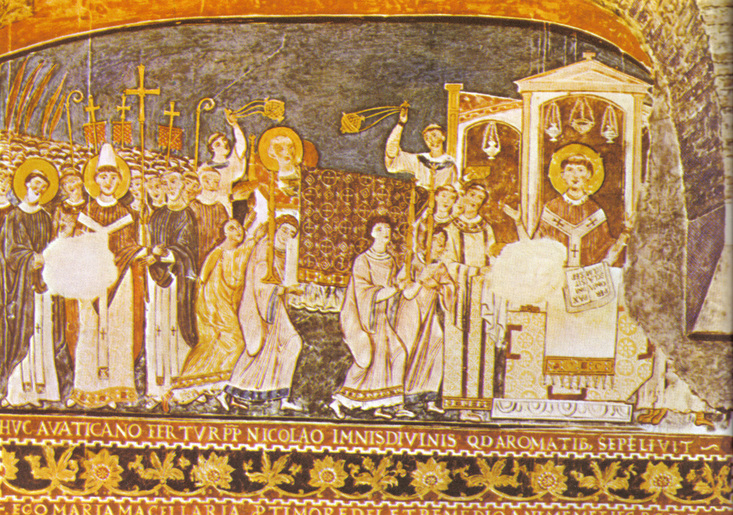posts
 Recently, I had the opportunity to read James K.A. Smith’s new book You are What You Love: The Spiritual Power of Habit. Beginning with the words of Jesus in Jn 1:38 (“what do you want”), Smith’s thesis is built on the claim that humans are driven by their loves more than by what they know or even claim to believe. Put another way, we are what we love (p. 7). Building off Augustine’s famous introduction in Confessions (“our hearts are restless [God] until they find their rest in you”), Smith adds that “Jesus’ command to follow him is a command to align our loves and longings with his” (p. 2). Again, authentic discipleship is demonstrated through what we love and cherish. Smith offers a deep well of wisdom in this book about God the Creator as well as human flourishing. I was particularly moved by his insights on worship. We are immersed in a broken world that promises a “good life” (material, erotic) and it’s easy to be accustomed to the world’s promises and rhythms —what Smith calls “secular liturgies” (p. 38). Because of this, he adds “we need to regularly calibrate our hearts, turning them to be directed toward the creator” (p. 20). He continues: “Christian worship . . . is essentially a counterformation to those rival liturgies we are often immersed in, cultural practices that covertly capture our loves and longings, miscalibrating them, orienting us to rival versions of the good life. This is why worship is the heart of discipleship” (p. 25). This is why regular connection with other believers in corporate worship is essential. Two things struck me about Smith’s teaching on worship. First, true worship is God-centered and actually God-led. He writes: “God is both the subject and object of our worship . . . the Triune God is both the audience and agent of worship: worship is to and for God, and God is active in worship in the Word and the Sacraments (p. 70). So “worship isn’t just something we do; it is where God does something to us” (p. 77). Citing Hughes Oliphant Old, he concludes, “The worship of the church is a matter of divine activity rather than human creativity” (p. 72). Second, in light of this God-centeredness, Smith challenges a one-sided view in worship in which believers function as the performers. He writes, “When we tacitly assume that we are the primary actors in worship, then we also assume that worship is basically an expressive endeavor” (p. 74). This leads us to continually strive for innovation so that our worship experience remains “fresh.” He continues: “Novelty is how we try to maintain the fresh sincerity of worship that is fundamentally understood as expressive (p. 75).” Pointing to a related problem, he adds, “too often we look for the Spirit in the extraordinary when God has promised to be present in the ordinary” (p. 67). Smith offers a final, helpful admonition: “In order to foster a Christian imagination, we don’t need to invent, we need to remember (p. 181). From this, he advocates historic Christian worship practices—a liturgy that includes a call to worship, confession, hearing the Scriptures, communing with the Lord at his table, and then being sent from worship on mission (pp. 96-99). He wants the church to remember its inherited worship traditions and forms in light of the temptation to constantly recreate itself. Perhaps “there can be a certain virtue to ‘going through the motions’” (p. 152).  In chapter 7 of Controversies in Mission, missiologist Ken Nehrbass evaluates how US Americans are perceived in general and particularly in the work of global mission. In the abstract of his chapter, he writes: Even as the United States wields substantial cultural influence in this era of globalization, US Americans are controversial figures. US Americans who sojourn overseas are even more controversial. Expatriates from any country are often received with ambivalence, whether they are migrant workers, refugees, or successful business owners, but among controversial Others, the US American missionary is especially provocative, as the United States of America represents “Gospel and gold, ointment and gun, oppressor and oppressed” (Conn 1984, 55). Opposing images of missionaries from the United States are portrayed in major motion pictures and best-selling novels, and they are coupled with the ubiquitous metaphor of the “Ugly American” (who is presumably NOT from Canada). Evening news broadcasts of flag-burnings and protesters holding signs that read (in Arabic) “Death to America” (Al Jazeera 2013) further reify the notion of anti-western and especially anti-American sentiment. Such negativity is prevalent to different degrees across the globe- sometimes reflexively in the form of “western self-loathing.” However, the United States continues to receive a fairly high international approval rating in polls. And in the midst of this ambivalence about the West and the United States in particular, the country which sends out the largest number of missionaries is still the United States (see Steffan 2013). In what ways do missionaries from the United States experience this phenomenon of anti-American sentiment? How do international stakeholders in Christian mission perceive US Americans and especially missionaries from the United States? Is the “ugly American” any more of a reality than “the ugly Canadian” (or the ugly German, Russian or Pakistani, etc.?) Are images of the US missionaries in film and news broadcasts congruent with the experiences of missionaries abroad? And how do international perceptions of US Americans affect mission strategies? Since an understanding of international opinions of US Americans in the 21st century can help shape how we design mission strategies for the future, this chapter examines the pervasiveness and lived reality of anti-American sentiment in the setting of missionary work. To accomplish this, I interviewed 19 participants (US Americans and internationals) who have resided outside of the United States for at least two years to gain insight regarding the broad spectrum of international perceptions of US Americans. I then analyzed this data in order to develop a theory that explains the impact of anti-western sentiment on missionary work. Visit HERE to learn more about this chapter and the book.  In chapter 3 of Controversies in Mission, Jerry Ireland discusses the tension of evangelism and social action in mission by appealing to the great twentieth-century evangelical thinker Carl F.H. Henry. He writes: The question of how evangelism and social concern relate to one another in the mission of the church has long occupied theologians, pastors, and missiologists. As Carl F. H. Henry once observed, “Perhaps no problem has distressed the modern churches more than determining the legitimacy of claims made upon Christian loyalties by champions of personal evangelism on the one hand and by those who call the church to social involvement on the other. These tensions now vex the church as never before in recent history” (Henry 1972, 3). The evangelical divide over this issue, though not entirely recent, became especially sharpened by the divisions that emerged from the fundamentalist-modernist controversy that peaked in the early decades of the twentieth century. Fundamentalism responded to the human-centered social agenda of liberal theology by mostly withdrawing from cultural engagement and social action. Rather than developing a more biblically balanced response to social issues, fundamentalism instead tended to truncate the gospel’s temporal relevance in favor of an exclusive focus on eternal matters (Henry 2003, 6; Marsden 1987, 4). . . I am deeply convinced that Henry ought to be heard again by a new generation of thinkers and practitioners searching for solid biblical footing. In particular, I am persuaded that Carl Henry’s regenerational model of evangelism and social concern—the focus of this essay—holds forth great promise for an evangelical consensus on an important issue that continues to divide the body of Christ. Learn more about this topic and the book HERE. On Wednesday at the Evangelical Theological Society annual meeting at San Antonio, I'll present a paper entitled, "Explaining the Trinity to Muslims and Jews in Medieval Christian Mission: Lessons from the Life of Cyril." Because the paper will be published in the January edition of the International Bulletin of Missionary Research, I'm unable to post the full text here, but the abstract below offers a taste of the presentation.
Cyril (ca. 826-869), along with his brother Methodius (815-885), is remembered in Christian and mission history for laboring to develop a Slavonic alphabet, which gave Slavic peoples Scripture, liturgical manuals, and a written language in which to express and grow their culture. What is less emphasized, however, and the focus of this paper, was Cyril’s prior mission work among Arab Muslims in Samarra (modern Iraq) as well as among the Khazars—which included both Jews and Muslims—in what is now southern Russia. Responding to the Byzantine emperor’s call to go to the Arabs, Cyril replied, “I will gladly go forth for our Christian creed.” Later, the emperor described Cyril’s mission to the Khazars in these terms: “Go forth, philosopher, to these people, speak to them and explain to them the Holy Trinity. In this paper, I will analyze how Cyril the philosopher presented the gospel, Christ, and the Trinity and responded to the queries of these Medieval Muslim and Jewish thinkers. What characterized Cyril’s approach to mission? Finally, what principles might be recovered for presenting historic Christian doctrine in mission today particularly in Muslim contexts?  Recently, Rochelle Cathcart Scheuermann and I co-edited the Evangelical Missiological Society's annual monograph entitled Controversies in Mission. In the overview of the book, we write: Crossing social, cultural, and religious barriers and making disciples of all nations has probably never been without some level of controversy. This book is an attempt to hit the pause button on this rapid-paced world and to refllect on how we do mission, especially in light of the new layers of complexity that globalization brings. While the contributors engage in new aspects of mission and cultural encounter unique to the twenty-first century, the underlying issues of each chapter are age-old topics that have reared their heads at various times throughout history: priorities in mission, power struggles, perspectives on cultural others, and contextualization. With that in mind, our aims are twofold: (1) to carefully consider issues causing tension and contention within current mission thought, practice and strategy and then (2) to engage in serious but charitable dialogue for the sake of God’s mission and the salvation of all peoples. A friend urged us to develop a course syllabus and discussion questions for each chapter of the book, which can be downloaded HERE. These are intended for an upper under graduate or seminary level course. Learn more about the book Controversies in Mission HERE. |
Archives
November 2023
|

 RSS Feed
RSS Feed
